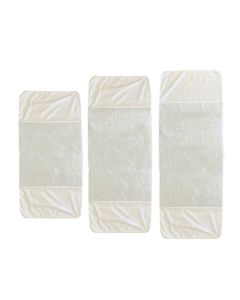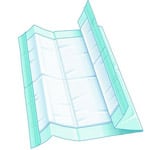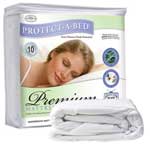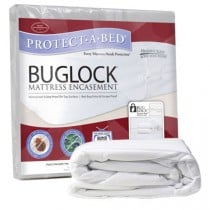Explore ways in which caregivers can keep supplies stocked and optimize their schedules without compromising the...
Washable Underpads
How to Choose a Washable Underpad
When selecting a reusable underpad, it is necessary to examine the different components of each pad: absorbency, backsheet material, and size. Depending upon your needs and these factors, the price of a reusable pad will vary. By examining the features below, you will be able to determine which pads are deemed appropriate to effectively meet your specific incontinent needs.
-
On Sale
-
On Sale
-
Most Popular
Absorbency: Involves the volume an underpad can effectively contain. What physically pulls in the moisture and liquid is an "absorbing polymer." More polymer and its density will have a significant impact on an underpad's absorption, as it will be able to securely hold more urine. However, please do not confuse absorbency with the size of your pad. A larger underpad does not always correlate to more absorption.
When determining the level of absorbency that you need, it is best to contemplate the amount and flow rate that will be landing on the reusable pad. For example, a small animal would likely produce a small volume and low flow rate of urine and, therefore, could successfully use a light absorbency pad. A potty-training child, though, would most likely have a higher output of urine and a faster flow rate, therefore requiring a more absorbent pad. An incontinent adult would probably produce the highest volume of urine and have the fastest flow rate. However, some determinants may allow an adult to use a lesser absorbency pad if the individual wears a diaper and is changed often. Please note, though, that if you are using a moderate absorbency reusable bed pad and it is not enough, do not layer multiple pads, as that can be problematic and cause leakage. The most effective and efficient solution is to use the correct absorbency level for your needs.
Materials: Once a pad has successfully absorbed the urine, it secures it by integrating a liquid-proof barrier, preventing it from running directly through the protective bedding. There are two main material types that are liquid-proof barriers: vinyl and urethane. There are notable differences between the two materials that can affect your decision making; learn about the differences before making your purchase.
Bed pads with a vinyl barrier:
- Can induce heat while sleeping.
- More cost-effective.
- Not breathable.
- Require more time to fully dry after washing.
Bed pads with a urethane barrier:
- Cost more.
- More durable and last longer.
- Permit the transfer of heat, which is beneficial during different seasons.
- Quiet.
- Wash and dry more quickly.
In addition to the barrier, there are other material factors that can affect a reusable underpad's absorbency, such as its filling. Common fillers in such a pad include cotton, polyester, rayon, nylon, or fiber. Peruse each product description below to determine the material contents.
Underpad Size: When determining the dimensions that are best for your needs, keep in mind that we recommend having a minimum of 6 to 10 inches around the "target zone." This border allows you to change positions and mishaps for fluid that miss its mark. By clicking on the product descriptions below, you can see what dimensions are available for that particular reusable underpad.








Login and Registration Form